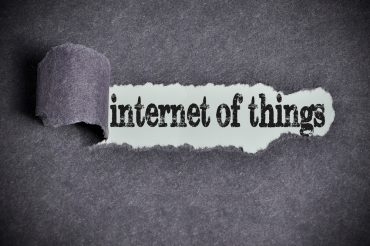
While everyone wants to leverage IoT to business success, there are many things to consider when you build IoT projects in your business lines.
Here at RTInsights, we present a lot of information how established organizations are reaching new heights of innovation as they add real-time capabilities to all facets of their operations. The same possibilities are open to those involved with startups or creating new business lines.
If you are an entrepreneur, startup executive, or a visionary within an existing organization, the emerging Internet of Things offers a wide range of opportunities. There will be no shortage of money and commitment flowing to this space, either. Zion Market Research recently released estimates that puts the global IoT device market at more than $158 billion within the next six years, growing at 23 percent annual clip. This includes processors, sensors, and connectivity for building and home automation, energy and utilities, manufacturing, connected logistics, transportation, and connected health.
Other observers also provide upbeat predictions. Frank Gens of IDC says cloud will be half-trillion dollar market by 2021, and that at least 20 percent of it will be at the edge or IoT; Intel predicts that by 2020 the IoT market will comprise nearly 300 billion devices Frost & Sullivan predicts smart cities alone will create a $1.5 trillion market for technology and services by 2020
See also: 5 things enterprise still needs to learn from startups in IoT
How can entrepreneurs and corporate innovators capitalize on this market that is expanding beyond all comprehension? The rules of the road for an IoT-driven venture differ from those of a traditional company, as pointed out by John Wechsler, founder of Launch Indiana. In a recent article at Entrepreneur, Wechsler provides guidance on how to start an IoT business. “If IoT is Mount Everest, we’re still at base camp when it comes to understanding the full implications of the climb,” he cautions, adding that “the market is hungry for it, but few have succeeded at doing it.”
Deploying IoT to drive business lines
Wenschler provides three nuggets of practical advice:
#1: Practice design thinking in product development. “Design thinking” puts designers in the customer’s shoes first, with the goal of providing an elegant, awe-inspiring experience. With design thinking, IoT innovators “can identify a need that justifies an IoT product, rather than hoping their product will create a need,” Wechsler observes. “When it comes to starting a new venture, the natural human inclination is to start with the tactical work. Design thinking inspires practical creativity to flourish. It involves following four steps in starting a business, creating a product or deploying a new strategy:1) Discover what people really need; 2) Push past obvious solutions to get to breakthrough ideas; 3) Build rough prototypes to make ideas better; 4) Craft a human story to inspire others to action.
#2: Scaling an IoT company is not the same as scaling any other company. Wechsler cautions against the typical “scaling fallacy” that pervades business planning — that is, if “something works at one size, it will work just as well at any size.” An IoT-driven company is built on a multiplying network effect, in which the range of functions, and volume of data, may expand geometrically as business grows. Supporting a growing number of data streams from multiple devices may require an increasingly robust infrastructure, likely in the cloud, with massive amounts of storage and processing.
#3: It’s all about security, security, security. With IoT, there are many more points of vulnerability to worry about than an average software company may have. Wechsler cites a recent study that found that only 33 percent of survey respondents believed they have complete control over the data that their IoT products collect. There’s the risk of “IoT security procrastination results from the rush to develop a product that’s inherently difficult to develop. The threat only grows as the number of connected devices increases, because each device represents a new door a hacker could break down. Thus, security must be a priority from the very beginning — even in early development. From there, IoT startups should be quick to invite experts to weigh in on vulnerabilities.”.







